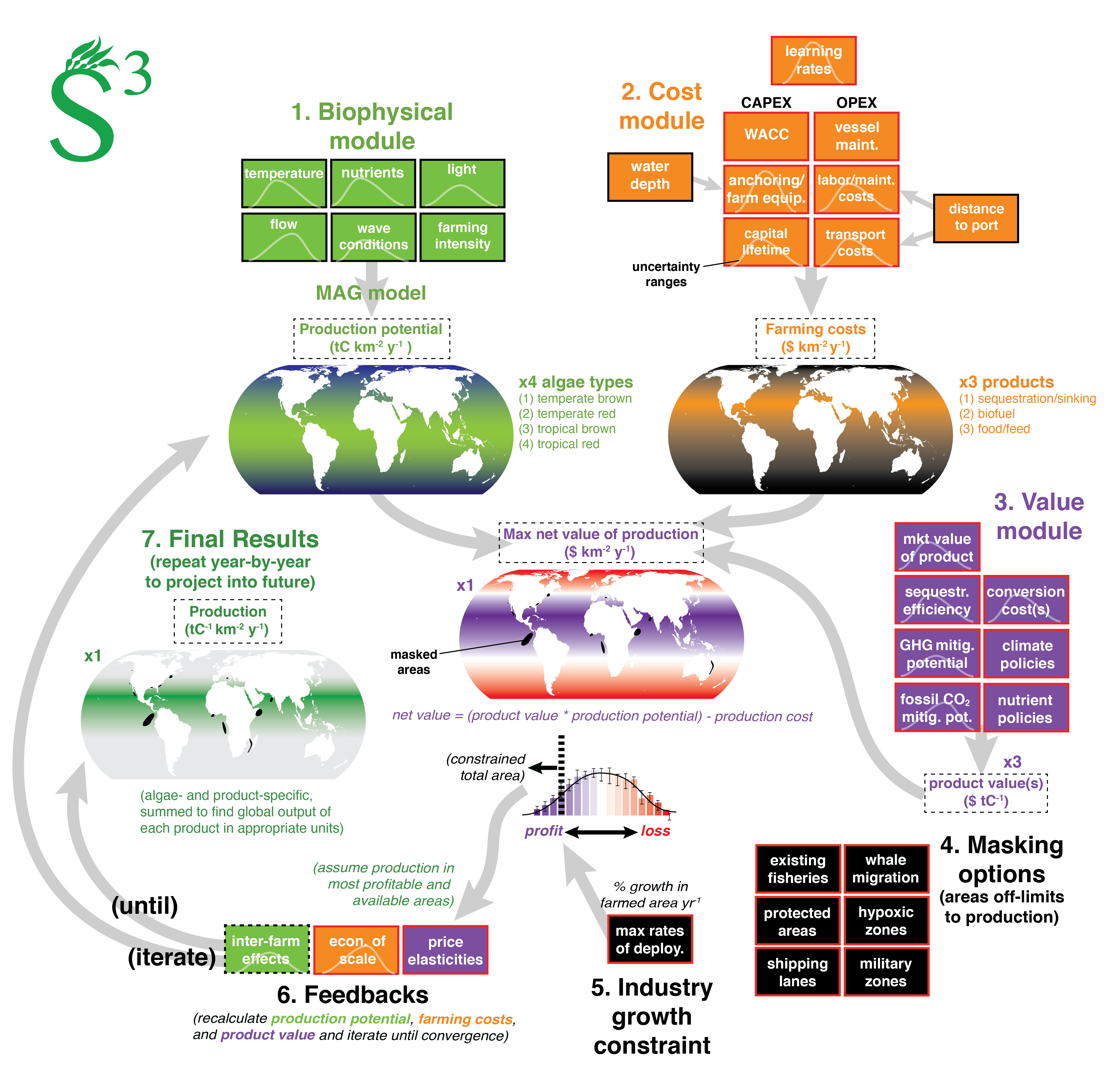
The figure below depicts our modeling framework schematically. The model will be based upon three interacting modules: (1) a biophysical module by which we will estimate the potential production of 4 types of macroalgae throughout the world’s oceans (in units of carbon per unit area per year), (2) a cost module to estimate product-specific costs of farming macroalgae everywhere (in units of $ per unit area per year) for 3 climate-related products (carbon sequestration via sinking, biofuels, and food/feed, and (3) a value module to estimate the economic and climate-related benefits of each of the same 3 products (in units of $ per ton of biomass C as well as the mass of CO2, CH4, and N2O emissions avoided).
The results of these three core modules will be combined to map the most economically valuable macroalgaeproduct combinations worldwide, and the areas to be farmed (and the types of production) will be determined according to the areas with the greatest net value of production up to the point that either the maximum global area is reached (an assumed limit in the annual % increase in farmed area worldwide) or else marginal production would operate at a loss (i.e. product values would be less than farming costs).
At this point, key biophysical and economic feedbacks will be evaluated based on the modeled levels and locations of production, and the process will iterate until the levels and locations of production converge. Trajectories of production over the time period 2020-2050 will be produced by re-running the model year-by-year and passing relevant values (e.g. the scale and locations of production) from one year to the next.
Critically, the model will assess potential, costs, and values across wide ranges of parameter uncertainty, testing for key sensitivities and thresholds.
